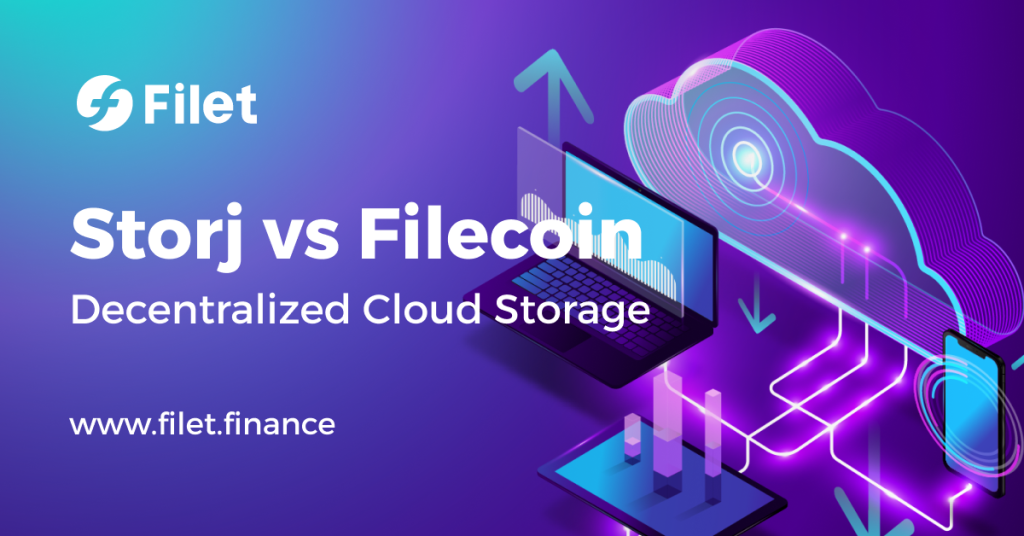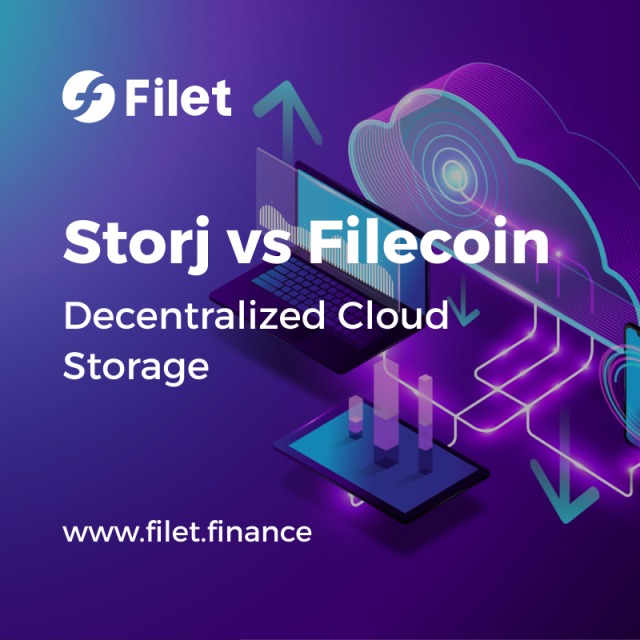
We’re living in an exciting time for blockchain-based storage solutions with cloud storage becoming a hit. And Storj and Filecoin are two storage platforms. Both are secure, cost-effective, and decentralized. While they’re both great options, there are some key differences to keep in mind when choosing one over the other.
What is Storj?
Storj is a decentralized cloud storage provider that aims to disrupt the centralized cloud storage providers. The way it works is simple: you upload files to the Storj network and it’s stored on multiple nodes worldwide.
This means that your data is less likely to go down with a single node or service going offline, making it more reliable than traditional cloud storage solutions.
What is Filecoin?
Filecoin is the first token built on the InterPlanetary File System (IPFS) protocol, a decentralized network for file storage. Unlike Storj, which uses a centralized cloud-based network, IPFS is a distributed file system that grows and becomes more efficient as it gets larger (for example, in terms of speed). It occupies the second layer of the Interplanetary File System (IPFS).
Filecoin includes a blockchain and native cryptocurrency (FIL). Storage providers earn units of FIL for storing files. Filecoin’s blockchain records transactions to send and receive FIL, along with proofs from storage providers that they are storing their files correctly.
Filecoin vs. Storj
Storj and Filecoin are both decentralized storage networks that allow users to store and access data in a decentralized manner. Both use encryption and distributed ledger technology to secure files and ensure their integrity. Both support transactions between their service providers and users. Filecoin is made of a free match market where clients and data providers can freely interact. Whereas, Storj uses a market maker model where clients pay the platform to get their data services. Both don’t charge migration costs; Storj accepts payment directly from users, while Filecoin uses its blockchain to solve service and settlement matters.
Filecoin is a blockchain-based storage solution, just like Storj. However, Filecoin doesn’t use a peer-to-peer network to store files on users’ computers but rather uses its own proprietary software. If you want to be able to upload files to the Filecoin network and earn rewards for doing so (called “Filecoin” tokens), you will need to run their software on your computer.
Storj uses its own proprietary protocol, while Filecoin uses the InterPlanetary File System (IPFS) protocol. This means that Filecoin is compatible with a wider range of applications and tools that support IPFS.
Filecoin uses an EC algorithm, whereas Storj depends on the Ethereum blockchain. In a world continually embracing decentralization, Filecoin provides decentralized storage services. Filecoin’s ICO raised $257 million, while Storj’s ICO raised $30 million. Filecoin has more room to grow as it is still under development and has not yet launched its considerable services to the public.
Conclusion
If the benefits of decentralized storage are important to you, then Storj and Filecoin could be suitable options. You may even want to use them together! They both offer similar features but have different approaches when it comes to their technology. The key is finding what works best for your needs and budget.
Contact Filet
Webiste: www.filet.finance
Telegram: https://t.me/filet_finance
Twitter: https://twitter.com/Filet_finance
Blog: https://www.filet.finance/blog_en/
Medium: https://filet.medium.com/
Email: contact@filet.finance
